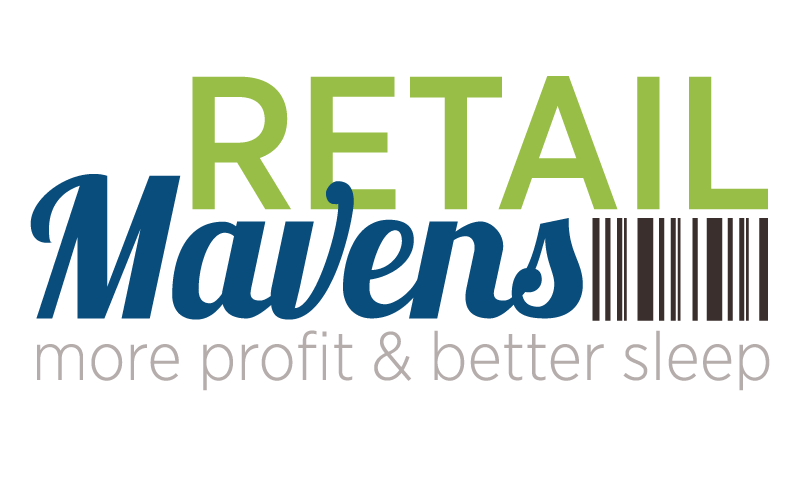Fred Mael, Phd
MaelConsulting.com
December can be a time of anxiety for everyone involved in retail activity. For store owners and merchandise producers, there is so much riding on having a smashing season’s finale. For retail employees, it can mean very long hours and big, agitated crowds – and the alternative is worse. And for many shoppers who should be enjoying the experience, it just isn’t that much fun. Steven Baum, president of Greetings and Readings in Hunt Valley, MD, says that anxious shoppers are the new normal and are a function of two wage earner families and very full schedules. There are other things at play as well.
One issue is the abundance of choices that epitomize our relatively affluent society. In a fascinating 2005 book The Paradox of Choice: Why More is Less, Barry Schwartz describes numerous studies in which shoppers who were offered fewer choices or varieties of a product – for example, 6 versus 24 or 30 – were significantly more likely to buy the product. Too many options make the decision process too arduous, makes second guessing more likely, and thus reduce satisfaction from beginning to end. Too many choices also lead to using arbitrary or even incorrect criteria to cut down the number of choices, which can increase dissatisfaction with the eventual choice.
This is true even with relatively simple products like jams and chocolates. When it comes to technical products in which the consumer may not understand the implications of their choices or even how to use many of the features or applications, the room for decision anxiety and buyer’s remorse are even greater. Add in the additional anxiety of trying to please someone else (a gift recipient) rather than one’s self and satisfaction with the purchase can get really shaky.
Advertisers are certainly complicit in trying to increase anxiety to sell their products and services. It is claimed that if you fail to buy their product or buy a different brand’s version, you will be unappealing to potential romantic partners or anyone you hope to impress. If you give the wrong product as a gift to a loved one, you will be seen as cheap, outdated, or insensitive. Your wrong choice of a gift will not just be returned – it will supposedly first be mocked behind your back.
Finally, people who have tendencies to compulsive or addictive shopping are especially vulnerable during peak gift giving and shopping periods.
Lowering the consumer’s stress threshold
There is something to be said for adopting some simple techniques before setting out to shop. These include using a predetermined shopping list and budget, thinking beforehand about the type of gift you want to purchase for a specific person, and self-limiting the ability to make any purchase just because it’s on sale. For those who lean to rational decision making, you can specify your criteria in advance (price versus style versus durability) and keep referring to them.
Steven Baum of Greetings and Readings has advice for anxious shoppers: Shop early (the selection is greater and the prices won’t get much lower later), buy things that show you care but are easily returnable, and avoid gifts with many features that people have strong preferences about, such as mobile phones.
What the retailer can do
Cathy Wagner, founder of RETAILMavens.com, says that lowering choices benefits the retailer as well as the consumer. She urges retailers to “go deep” on a few products, flavors, or colors that they themselves think highly of, and then let their expertise and enthusiasm inform their interactions with customers. She finds retailers often underestimate and devalue the importance of their product knowledge. The retailers’ informed and enthusiastic demeanor provides the consumer with more confidence in their own choices, justifies the need for the retailer compared to shopping at online sources, and makes the whole shopping experience more enjoyable.
As a retailer, you can help the customer narrow down their choices by presenting decision tree questions – “do you want this or that feature/component/look?” But if you assume they know the difference between an iPhone or an Android, or between “easy fit” or “relaxed fit” jeans, you may intimidate them and forfeit the goodwill you wished to engender. Remember that people are often buying products across generational divides – they are unlike you and the person for whom they are buying a gift. Start with simple descriptions and tailor your questions to the shopper’s expertise level.
It’s also important to hire employees who are willing to say “I don’t know” and confer with a manager or more seasoned fellow employee. Outsized egos and (conversely) insecurity can lead some employees to give wrong information rather than utilize peers with more experience. By contrast, the employee who shows compassion and patience can be a hero to the harried customer.
Cathy Wagner tells retailers to view themselves as shopping along with the customer like a well-informed friend would, rather than selling to them. By sharing customers’ anxieties and celebrating their finding a resolution to their shopping concerns, the retailer greatly improves the shopping experience and increases the likelihood of future purchases. For many retailers, this will involve a paradigm shift and will be more or less appealing depending on store size and type of product. However, the potential payoff is great: Returning elements of calm, confidence, and camaraderie to what could be a joyful precursor to tangibly expressing affection to others.
Fred Mael, PhD, helps organizations and their employees work more effectively, and coaches executives and managers. www.maelconsulting.com. (www.smartceo.com). This article appeared in the October 2013 issues of Baltimore SmartCEO and Washington SmartCEO magazine (www.smartceo.com).

